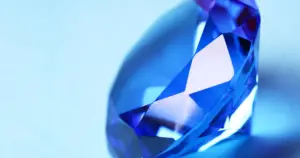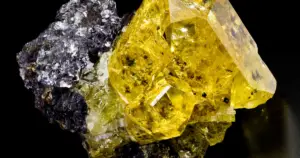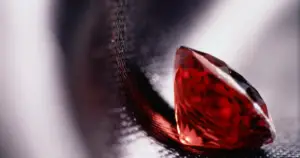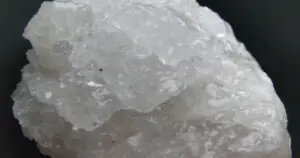Monazite Meaning: Healing Properties, Benefits and Uses
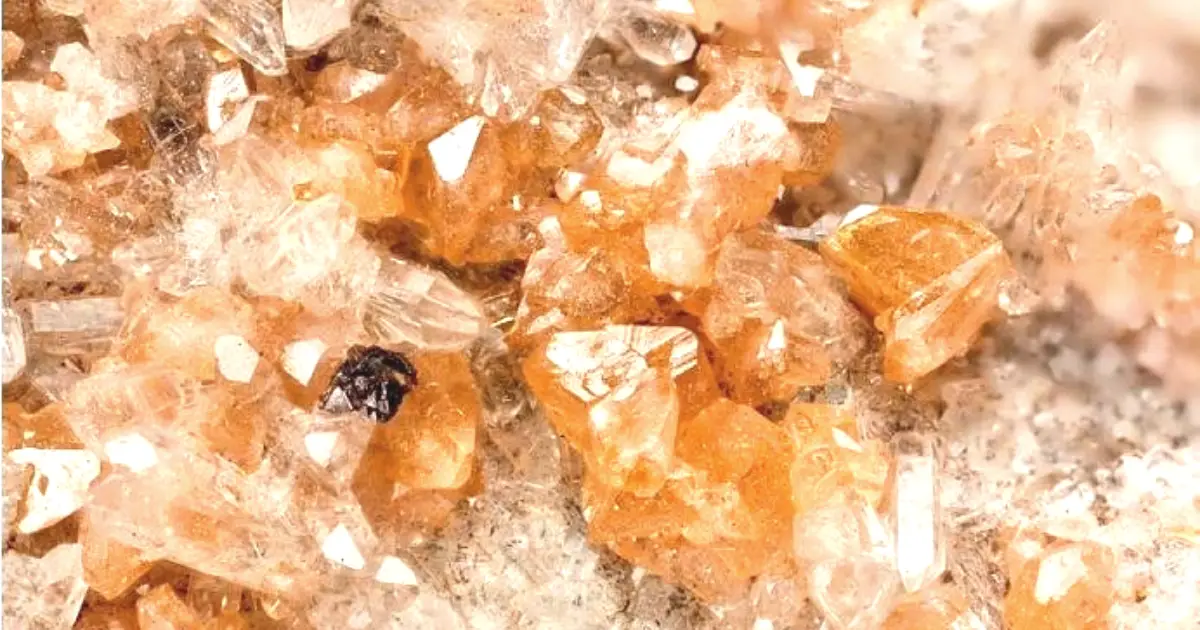
Monazite is an accessory mineral and occurs in small, isolated grains in igneous and metamorphic rocks like granite, pegmatite, schist, and gneiss. This phosphate mineral, which contains both cerium and lanthanum, is the main commercial source of cerium.
Monazite is found as tiny, brown, resinous, and relatively heavy crystals in granitic and gneissic rocks and their byproducts (known as monazite sands), is a significant economic source of thorium as it frequently contains 10–12% thorium dioxide (ThO2).
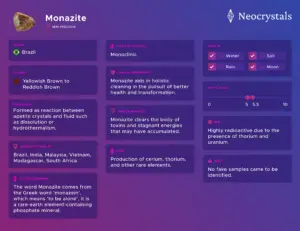
Table of Contents
What is Monazite?
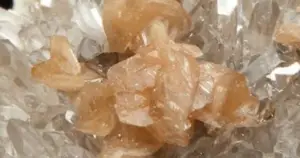
Monazite is a rare-earth element-containing phosphate mineral. It is regarded as a category of minerals due to its variable composition. It typically appears as an accessory mineral in small, solitary grains in igneous and metamorphic rocks such as granite, pegmatite, schist, and gneiss. They are mined for their rare earth and thorium contents when they are present in sufficient concentrations.
Monazite is relatively dense, weighing between 4.6 and 5.7 g/cm3, and has a Mohs hardness of 5.0 to 5.5. There are five different types of monazite. Tabular or prismatic crystals of the color yellow, yellow-brown, brown, rose-red, or reddish-brown are formed by monazite. There have been reports of color changes from reddish-orange in daylight to pinkish-brown in tungsten light.
How to identify a Monazite?
Monazite can be identified by its properties. It is a mineral having a resinous to vitreous sheen, ranging in color from yellowish brown to reddish brown or greenish brown. It is transparent and infrequently found as well-formed crystals or big grains. In areas where monazite is prevalent locally, granular masses occasionally appear.
It breaks with a clear to decent cleavage. Its hardness is between 5 and 5.5. Depending on its composition, it has a peculiarly high specific gravity, which ranges from 4.6 to 5.4. Additionally, due to the presence of thorium and, less frequently, uranium, because thorium emits a lot of radiation, monazite is radioactive.
– Monazite Cuts & Shapes
In regards to monazite, faceted gemstones from Swiss crystals or fragments of crystals from other locales would typically weigh less than 5 carats. Facetable material is extremely uncommon, and all but a few private collections lack cut stones. Numerous huge crystals have been discovered, and they can all be cut into large cabochons.
Where is Monazite Found?
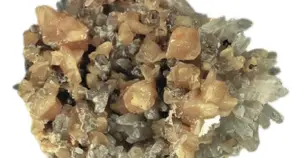
Monazite is typically discovered in placer deposits. Today, Brazil, India, Malaysia, Vietnam, and other countries offshore seas are where the majority of it is generated. The largest known offshore monazite resources are in southern India and Sri Lanka.
Along the southeast coast of the United States, from North Carolina to Florida, monazite has also been extracted as a byproduct from offshore deposits. There are known inland and offshore deposits in many states, but they are small and low-grade compared to what has currently mined abroad.
On the other hand, Australia is thought to have the largest monazite resource in the world and was once the largest monazite producer in the world. Since the 1990s, when mining on Frasier Island was halted due to public outcry, it has not been a significant producer.
Monazite Stone Meaning

The word Monazite comes from the Greek word ‘monazein’, which means ‘to be alone’. German mineralogist Johann Breitgaupt gave this hitherto undiscovered new stone its name in 1829. It is a fitting name because it makes reference to the fundamental origin of monazite, which is typically found as isolated individual crystals in phosphatic pegmatites. isolated crystals in an unusual crystalline matrix. The name seems appropriate.
Carl Auer von Welsbach discovered monazite sand from Brazil in ship ballast for the first time in the 1880s. Thorium was needed by Von Welsbach for his recently developed incandescent mantles. The rare-earth business swiftly built its basis on monazite sand as a thorium supply.
Monazite Meaning in Ancient Lore and History
Monazite has not had a very positive history. For example, in the 1930s, the mineral was mostly found in two places: the Tarak deposit in Siberia and the Ozernoye town in the Sverdlovsk Region. There, monazite was discovered in both the form of alluvial sands and distinct crystals.
Large amounts of it already depleted but still containing thorium were left in the form of open-access dumps after valuable components had been taken from them. The locals of nearby settlements could not remain oblivious to piles of construction materials, so the most enterprising started to disperse it for domestic purposes.
Sixty years later, research in these regions revealed that residents had received high radiation doses. As a result, the villages needed to be decontaminated.
Monazite Crystal Properties
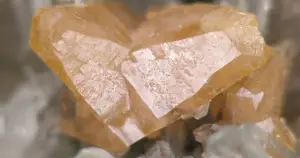
Monazite is said to bring positive energy and a new zest for life. It is a stone that can help stabilize the mind and break bad habits. It increases happiness and helps to find inner peace. Additionally, it has incredible therapeutic properties.
Monazite Healing Properties
Monazite aids in holistic cleaning in the pursuit of better health and transformation. In the process of clearing the body of toxins and stagnant energies that have accumulated, this stone is very beneficial. It encourages healthy life and cleanliness.
Monazite Metaphysical Properties
This stone aids in purging the mind of unwanted, distracting thoughts. The removal of unfavorable energy and disruptive or destructive behavior may benefit from the use of monazite.
Monazite Benefits
One of the benefits of monazite stone is that it can be used as a talisman that can be advantageous in many areas, including health, relationships, education, profession, and so forth.
Monazite Benefits Spirituality
There are some crystals connected to important planets that draw their energy into the wearer’s body. Powers of Monazite can benefit a person for crystal healing but there have been no known spiritual benefits of Monazite.
Monazite & Feng Shui
Monazite is not believed to have any powers in Feng shui.
Monazite Birthstone
Monazite is not a traditional birthstone and is neither attached to any astrological sign of the zodiac.
Monazite Chakras
Monazite is a mineral stone that does not have spiritual benefits. The stone is not linked with any chakra as per the known facts.
What are the Uses of Monazite?
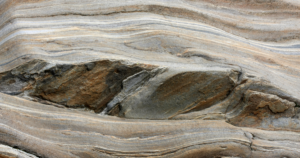
Monazite is a key location for the production of cerium, thorium, and other rare elements. It is frequently extracted as a by-product from sources of heavy minerals. Monazite also contains neodymium, a soft, silvery, and metallic metal which creates an incredibly strong magnet.
Because it contains a range of rare-earth metals, monazite is an essential source of renewable energy. These REE (rare-earth metals) are the best option for wind energy and other generating systems since they can be extracted safely and can be repurposed as magnets.
Caring for Monazite
Since monazite can be radioactive in nature, utmost attention must be given while taking care of this stone. It should be kept away from anything which can trigger its radioactivity. Hence, for cleaning, we would advise using a very soft towel, too, very gently.
When to Cleanse Monazite?
Monazite can be cleaned in case of any exposure to negative energies or dust particles. It is advised to clean it before any use.
How to Recharge Your Monazite?
Like all other crystals and priceless energy jewels, you should keep your gemstones cleansed and charged so that they are always ready to lend a hand. Sprinkle a few drops of your chosen spiritual smudging fragrance over your stone as one spiritual approach for recharging it. Before being placed on a tidy plate, the stone needs to be cleaned with a sensitive, clean cloth.
How much is Monazite worth?
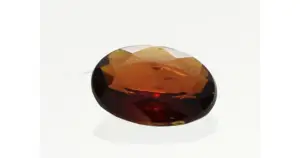
Monazite, being an uncommon mineral, is extremely valuable. Also, since it is a rare-earth element, the value increases. Currently, monazite costs between $1680 and $1900 per tonne.
What determines Monazite’s price and value?
The price and value of Monazite depend mainly on its rarity and availability. At the same time, physical properties like size, gravity, luster, and color play a great role in determining worth.
Monazite Impact
Its radioactivity impacted the Second World War. When installing “Topfmine” type mines, which have almost no metal components and cannot be found by conventional mine detectors, the Germans poured monazite sand on the ground. This made mine clearance easier and made it easier to find the mine.
Does Monazite make a good jewelry stone?
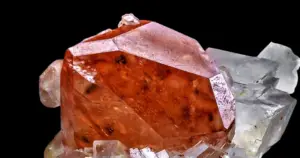
Yes, monazite, being a sturdy and durable mineral, makes a good jewelry stone. It has a hardness of 5.0 to 5.5 on the Mohs scale which makes it suitable to be carved and designed. However, due to its rarity and unavailability, it is not widely used in making jewelry.
Monazite Real vs Fake
Due to their characteristic thorium and uranium contents, the majority of specimens are highly radioactive. This can be tested to identify the real monazite. Also, the oxalates of rare earth metals are precipitated by heating with strong sulfuric acid; the solution, after being diluted with water and filtered, contains ammonium oxalate, and hence, experimentation can help in distinguishing the real from the fake. The physical features of the stone can also be looked at to confirm.
FAQs
What is Monazite used for?
Monazite is generally used for the extraction of cerium, thorium, and other rare elements.
How is Monazite formed?
Monazite often forms as an early-crystallizing mineral in magmas but it can also be produced via reactions between apatite crystals and fluid, including dissolution, hydrothermalism, and metasomatism.
How do you cleanse Monazite?
Since monazite can be radioactive, it is advised to clean it gently with a soft, dry towel.
Is Monazite rare?
Due to the presence of thorium, monazite is an extremely uncommon gem that is mildly radioactive. While uncommon, individual crystals can be found in pegmatites.
How strong is Monazite?
Monazite is placed in between 5.0-5.5 on the Mohs scale of hardness.
How much is Monazite worth?
The general range of monazite per tonne could be in between $1680 and $1900.
How do you identify Monazite?
Monazite can be identified by its physical properties like color, cleavage, specific gravity and hardness.
Where is Monazite found?
Monazite sands are found in significant quantities in South Africa, Madagascar, and India. Monazite deposits are very abundant in India.
